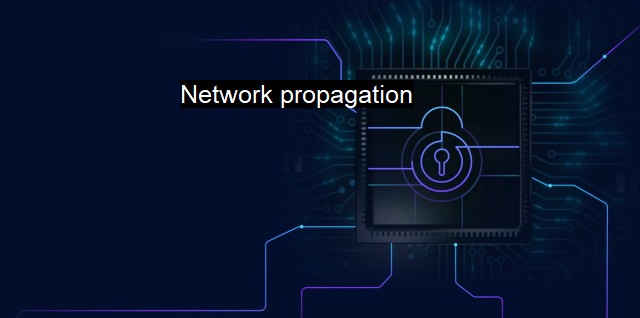What is Network propagation?
Guarding Against Malware's Spread: Mitigating Network Propagation with Antivirus Solutions
Network propagation, in the specific context of cybersecurity and antivirus, refers to the process employed by cyber threats such as worms or malware to multiply or distribute themselves across one system to another within a network, subsequently compromising them.This phenomenon has continued to trouble numerous institutions and individual users worldwide whose digital structures have been broken into, resulting in a loss of crucial data and leakage of sensitive information. The perpetrators might typically seek either financial gain from ransoms or decryption fees, be invested in corporate espionage, or be state-sponsored actors pursuing geo-strategic advantages.
One of the key characteristics of network propagation is its capacity to reproduce, which consists of communicating malicious executable files to other computers linked within a network, or even across several networks. This ability to spread without human intervention accelerates the dissemination of the threat considerably, rendering the challenge difficult for cybersecurity professionals.
Upon reaching its target, the malfeasance leaps into action. It might involve encoding the data on the victim network, incapacitating the systems, and prompting for a ransom for the decryption. Alternatively, it could initiate a covert activity, stealthily collecting and dispatching information back to the originator, thus staging a serious breach of data privacy and protection.
The challenge posed by network propagation is amplified by the increasingly connected world of IoT devices and machinery – a sprawling network whose weak links are readily and gleefully exploited by such cyber threats. What is more concerning, each successful penetration can be strategically transformed by the intruders into a new base to further deploy attacks.
Having understood the intricacies of network propagation in antivirus and cybersecurity, the antidote naturally gravitates towards a solid defense mechanism. Protection from such threats necessitates a holistic approach, with due emphasis on preventive, detective, and corrective controls. A mix of advanced technological tools and effective human actions designed to shield networks and systems is essential to ensure robust cybersecurity.
Preventive controls, as the name indicates, pertains to preventing a cyber-incident from triggering. Deploying secure and updated hardware and software, robust firewalls, and network segmentation can curtail the risk, while educating users about the significance of strong and frequently updated passwords and avoidance of suspicious mails and prompts, equips them to resist initiation of a potential breach.
Detective controls revolve around promptly comprehending an active threat. Advanced antivirus programs aided by machine learning can track unusual activities on the network, which could potentially be malware operations. Next-generation firewalls and intrusion detection/prevention systems offer real-time protection and threat intelligence, enabling immediate recognition and containment of network propagation.
Corrective controls focus primarily on damage control – containing the threat, eradicating it, and restoring the affected systems and networks. Organizations should ensue to have an updated disaster recovery plan, backup, and incident response strategy in place. The importance of public-private partnerships and international collaborations in fighting the multifaceted beast of cybercrime, that employs network propagation so effectively, cannot be overstressed.
Network propagation signifies the dispersion strategy of wide-ranging cyber threats. Seizing the interconnected advantages offered by networks, malware and worms propagate their malicious payloads across systems with dangerous efficacy. As a multi-tiered cybersecurity strategy becomes the need of the hour, the efforts must remain concerted and continuous, given the evolving nature of cyber threats.

Network propagation FAQs
What is network propagation in cybersecurity?
Network propagation in cybersecurity refers to the ability of malware or viruses to spread from one device to another over a network connection.How does network propagation happen in antivirus software?
In antivirus software, network propagation happens when the software detects a threat on one device and sends information about that threat to all other devices on the network, allowing them to take necessary measures to prevent infection.Can network propagation be prevented?
Network propagation can be prevented by implementing security measures such as firewalls, intrusion detection and prevention systems, and endpoint protection. These measures can help detect and stop malware from spreading over the network.What are the risks of network propagation in cybersecurity?
The risks of network propagation in cybersecurity include the rapid spread of malware or viruses throughout an organization's network, leading to data loss, system downtime, and even financial losses. It can also result in reputational damage and loss of customer trust in the affected organization.| | A | | | B | | | C | | | D | | | E | | | F | | | G | | | H | | | I | | | J | | | K | | | L | | | M | |
| | N | | | O | | | P | | | Q | | | R | | | S | | | T | | | U | | | V | | | W | | | X | | | Y | | | Z | |
| | 1 | | | 2 | | | 3 | | | 4 | | | 7 | | | 8 | | |||||||